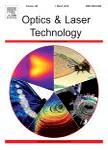版权所有:内蒙古大学图书馆 技术提供:维普资讯• 智图
内蒙古自治区呼和浩特市赛罕区大学西街235号 邮编: 010021

作者机构:Hainan Univ Sch Elect Sci & Technol Haikou 570228 Peoples R China Wuhan Univ Sch Power & Mech Engn Wuhan 430072 Peoples R China Wuhan Univ Inst Technol Sci Wuhan 430072 Peoples R China
出 版 物:《OPTICS AND LASER TECHNOLOGY》 (Opt Laser Technol)
年 卷 期:2025年第184卷
核心收录:
学科分类:070207[理学-光学] 07[理学] 08[工学] 0803[工学-光学工程] 0702[理学-物理学]
基 金:Hainan Province Science and Technology Special Fund [ZDYF2023GXJS005] Collaborative Innovation Center of Information Technology, Hainan University [XTCX2022XXB03] Major Program (JD) of Hubei Province [2023BAA008] Jiangsu Province Engineering Research Center of Integrated Circuit Advanced Assembly and Test, China [NTIKFJJ202305] Open Fund Project of the State Key Laboratory of Intelligent Vehicle Safety Technology [IVSTSKL-202308] Hainan University Research Initiation Fund Project [XJ2400011663]
主 题:Angle-resolved scatterometer Inverse problem solution Library search Particle swarm optimization
摘 要:The angle-resolved scatterometer (ARS) is a model-based technique that has demonstrated significant potential for critical dimension (CD) measurements in integrated circuit (IC) manufacturing due to its high speed, accuracy, and non-contact operation. ARS is essentially an inverse problem-solving process. Traditional methods, such as library search, rely on extensive spectral databases with fine grid intervals, which impose substantial storage and computational demands. Nonlinear regression techniques, like the Levenberg-Marquardt (LM) algorithm, require significant computational resources for real-time Jacobian matrix evaluations, limiting their applicability for online measurements. To overcome these challenges, we propose a hybrid method combining library search and particle swarm optimization (LSPSO). This approach employs a sparse spectral library with large grid intervals (LGI), dramatically reducing storage requirements. The LGI library also guides the initial search direction for the PSO, eliminating the need for early model evaluations and improving computational efficiency by reducing the number of model computations. Simulations on both single-parameter (film) and multi-parameter (grating) models demonstrate the accuracy of LSPSO, with noise analysis further confirming its stability. Experimental validation on grating structures reveals that LSPSO improves computational efficiency by 52% compared to standard PSO and operates 1.7 times faster than the LM method. Moreover, the spectral data required by LSPSO is reduced to just 0.1% of the data needed by traditional library search methods. These results position LSPSO as a highly efficient, accurate, and resource-efficient solution for CD measurements in ARS applications.